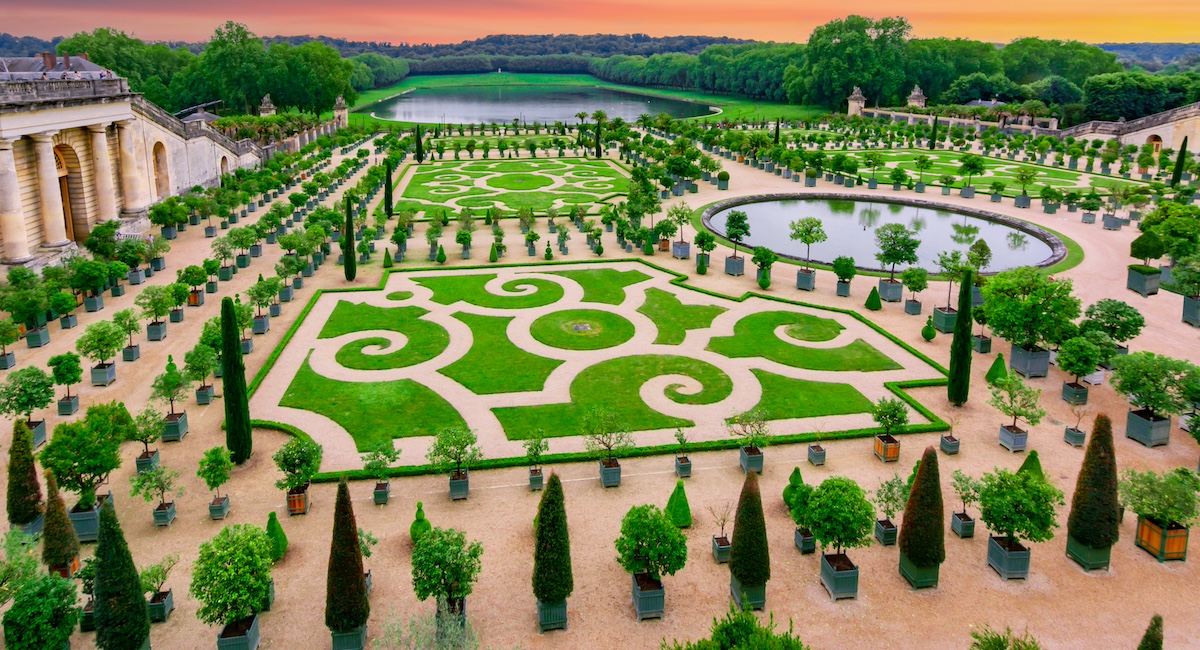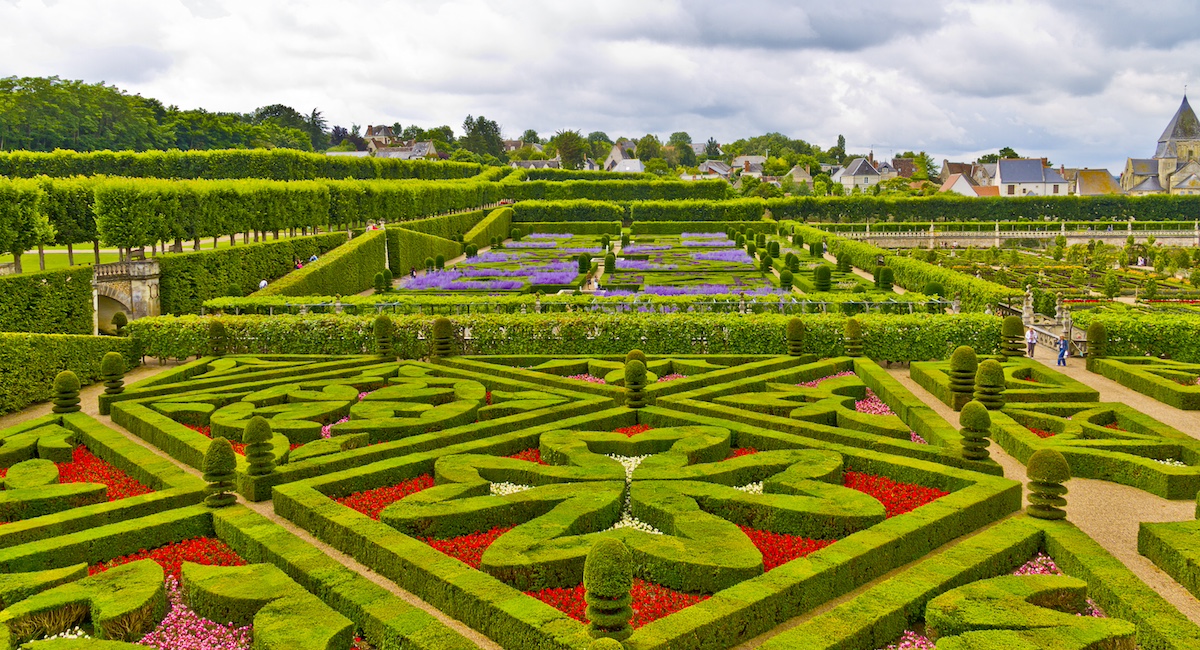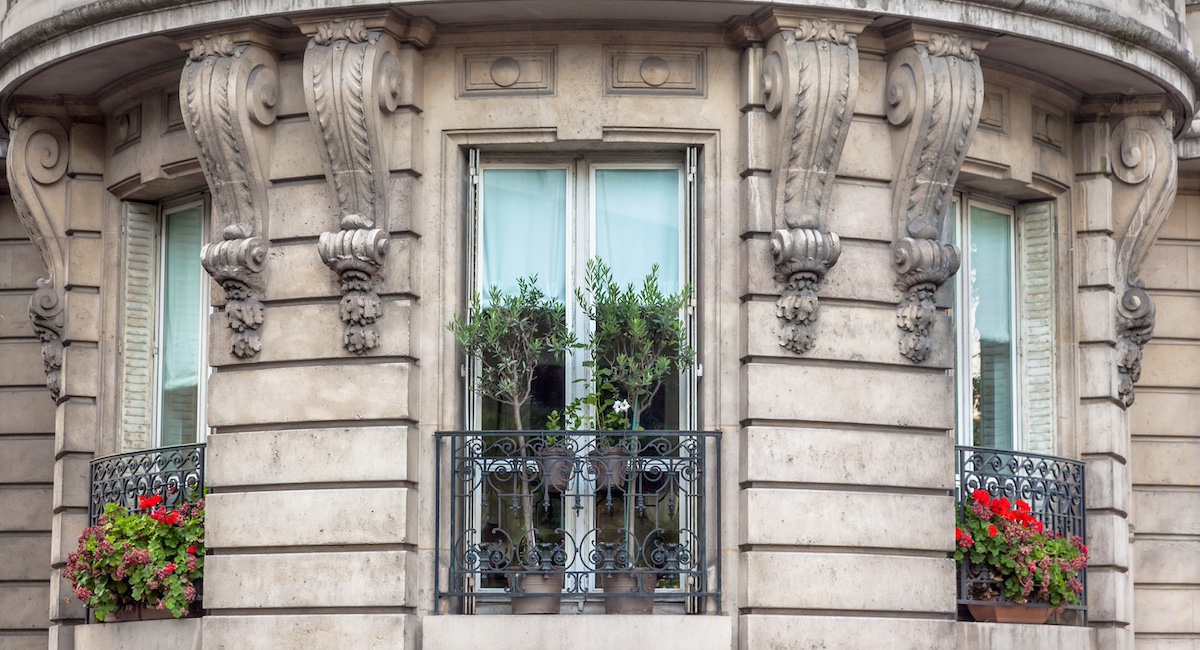Whether you have a windowsill, balcony, or rooftop garden, now is the season to get your plants in order. And as you find yourself learning more about growing life from scratch, this could also be a good opportunity to take a hint from the French in terms of style and approach.
What is a French Garden, or Jardin Français?

The “French garden,” or jardin français, is a concept dating back to the seventeenth and eighteenth centuries, when the Enlightenment was at its peak, and new discoveries in science and technology produced an ideology formatted around reason, above all else. Everything in nature could be bent to the human will, or so it was believed… including gardens.
While “English gardens” of the time were treatises on romanticism, cobbled together from different themes to create a meandering experience left to each viewer’s interpretation, the French garden was formal, exacting, and precise. Picture Versailles from above: its distinctive curlicues and segmented pathways and flowerbeds and shrubberies, which must be meticulously maintained in order to retain their shape. (Though Versailles did have an English garden, the very one where Marie Antoinette built a miniature hamlet and pretended to be a milkmaid.) Louis XIV commissioned the gardens from André le Nôtre in 1661, personally overseeing every detail, in a process that took 40 years to complete.
These gardens, and their influence, have not diminished over the last three plus centuries. In France alone, other notable examples include the gardens of the Château de Villandry in the Loire Valley, the Château de Vendeuvre in Normandy, and, of course, Paris’s Jardin des Tuileries (another project of Le Nôtre’s).
So what can be learned from these gardens? In an era where some sense of control is rare to come by, enforcing complete dominion over your little garden can be therapeutic, to say the least.
How to Plant a French Garden

Common flowers found in French gardens include irises, lilies, and peonies (the omnipresent favorite of French florists). All three can be planted in pots as well as in the ground, and as lilies and irises only produce one stalk per bulb, you can be very exact about their placement. Tulips, daffodils, lilacs, and roses are also very popular, as well as muguets, or lily-of-the-valley, the flower of the Fête du Travail (France’s Labor Day, which is celebrated on May 1st). For a quintessential Parisian window box, sun-loving geraniums are an absolute necessity.
If you have a proper yard, go ahead and throw in a fountain or statue as a centerpiece, and build the garden out from there. Segment your lawn with symmetrical flower beds or gravel paths. Perhaps now is the time to bring back the lost art of topiary… we suggest boxwood or yew shrubs, which can be used both as barriers and as eye-catching works of living statuary. Confine each flower type to its own bed to create color blocks that draw the eye. And above all, keep your yard mowed and your beds weeded, to give peace of mind akin to that of a made bed or an orderly desktop.
Maybe you don’t have much outdoor space, only a little ledge by the window to call your own. In that case, you could always get into miniature gardening and try to recreate some of the grand gardens mentioned here… not to scale.
If all this seems a little over the top, and you’d rather keep the flowers without having to put in all the work, you might be more interested in learning the art of arranging flowers like the French.
French Gardening Vocabulary

Le jardinage – gardening
Le jardin – garden
Le potager – vegetable garden
Le parterre – flower bed
La serre – greenhouse
Les mauvaises herbes – weeds
L’herbe – grass
Le sol – soil
La plante en pot – potted plant
La plante vivace – perennial
Bisannuel – biennial
Annuel – annual
à feuilles persistantes – evergreen
La plante grasse – succulent
Popular flowers
La rose – rose
La pivoine – peony
L’iris – iris
Le lys – lily
La tulipe – tulip
Le muguet – lily of the valley
Le géranium – geranium
Tools
Les outils de jardin – gardening tools
La bêche – spade
Le râteau – rake
La brouette – wheelbarrow
Le déplantoir – trowel
L’arrosoir – watering can
La tondeuse – lawnmower






